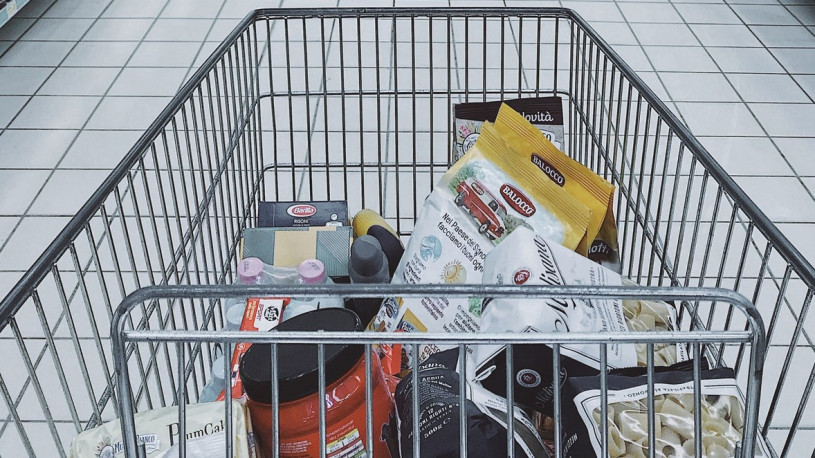-
Is the Amount of Potassium in Food Dangerous?
 Continue Reading
Continue ReadingAn increasingly discussed topic in mainstream media, the twittersphere and facebookdom is the presence of additives in food. In fact it has become such a staple part of the conversation on eating that it is pure irony that the phrase ‘food preservative’ is permanently preserved in the fodder of our vocabulary.
Unfortunately, some parts of the debate turn aggressive and cruel. With anti-GMO protesters sometimes unwilling to hear scientific debate, or where big-agro spin doctors twist statistics to suit an argument. It has become a war of words, which as the Greek dramatist, Aeschylus said, “In war, the first casualty is truth.”
Of course, when he said this, he might have been questioning the use of sodium in his salt fish or the high oil content in his jar of olives, as even 2,500 years ago food preservatives existed. They are still required today, from the moment many foods are prepared; a fact that may need explaining to many members of the public.
Without additives, processed foods would not be able to be transported far, or would make a lot of people sick.
As it is, there are strict laws in place, to control all aspects of food production from farm gate to plate. But, as in any business, 100% guarantees are not possible. Unscrupulous businessmen bend and break rules, whilst changes in technology can produce cheaper substitutes, sometimes ahead of the law. And it is of course, these cases that make newspaper headlines.
Of these headlines, potassium carbonate has been in the news of late. It belongs to the group of additives, with the code E501 and is used in the manufacture of chocolate, cocoa powder and gingerbread.
Potassium carbonate is used as its alkalinity controls acid flavours. It also stabilizes food colours (such as fish fillets), reduces bitter aftertastes and regulates fat.
However, the campaign against ‘E numbers’ recently led one US manufacturer of chocolate ice cream to court, where they were required to pay compensation for using potassium carbonate to enhance the use of cocoa. Thus, it was claimed ‘devaluing the quality of the product’.
Given that potassium carbonate has been used as a food ingriedent for more than 100 years, during which time no adverse effects were noted (despite detailed and frequent testing), it was decided that the legal action would be dismissed.
However, only a short time later, another law suit was filed, this time against the food giant Unilever, for exactly the same product (chocolate icecream).
As long as cases like this remain, the law will hold a sense of ridiculousness given the natural sourcing of potassium carbonate. And given that it is mined in the US under strict controls, it is a wonder that salt has not also been banned or labelled as ‘toxic’. Where will this all end?
-
How to Start Trading in Chemicals – The Basics
 Continue Reading
Continue Reading1. Get together the right team. You will need a good mix of capable salesmen, technical support for chemicals and someone with know-how or the ability to learn how the paperwork on exports and imports operates.
2. Do you your homework. You can’t just jump in and start trading, as most buyers already have set contracts to purchase (so it’s not just a case of offering the lowest price for a product). Other buyers will have agreed a fixed supply chain with a large multi-national, which can make your chances of cutting in to the business much harder, so choose your market wisely.
With this in mind, many start up traders focus on base chemicals as they have a wider usage, giving you more potential customers.
You can start out in speciality chemicals, but they do require a better understanding of the market and product, they also might need special licensing and paperwork that can be difficult and time consuming to navigate if you are new to the industry.
3. Know your chemicals trading jargon. As Low Jia Wee of Trade Asia International Ltd makes clear, “Be familiar of terminologies like incoterms, payment terms, port of loading and port of discharge. Incoterms include FOB (Freight on Board), CIF (Cost Insurance Freight), and CFR (Cost and Freight). Payment terms include DP (Direct Payment) and TT (Telegraphic Transfer).”
4. Work out your numbers. Profit margins can be small (typically as low as 5%). This makes it important to understand your logistics trail. Effective packing and trade routes are vital to success. That is why as a chemicals trader it is important to constantly consider, TLC (total landed cost).
5. Find the best suppliers. This will involve one (or more) of the following methods;
- Online networking. Take part in one of the numerous trade discussion groups, such as those found on LinkedIn to make contacts and gain an insight into the industry.
- Traditional networking. Attend one of the many conferences that are held by groups such as ICIS (the Independent Chemical Information Service), the Royal Society of Chemistry (RSC) and the American Chemistry Society (ACS). There are also many trade directories with listings of the thousands of potential customers, business partners and competitors to leaf through.
- The lazy/easy way is to use an online chemical marketplace or matching service, that way you can simply browse through the available offers, much like using E-bay. Alternatively, some sites allow you to post a request to buy a certain amount of a product and wait for the sellers to find you. Businesses like these are still relatively new to the chemical trade, but can save you a lot of time and effort, allowing you to search for specific products any time of day from your office or home. The services offered do vary slightly, but some popular sites include panjiva.com, kemcore.com, spotchemi.eu (who sponsor this blog) and of course, Alibaba.
6. Think East. The last decade or two, has seen a seismic shift in where chemicals are sourced and traded, as the traditionally strong European and North American markets have experienced stagnation in recent years.
Increasingly, today’s industry chemicals industry is centred on the Asia-pacific region. You will likely need contacts there if you are to succeed. As Calisto Radithipa, who has more than a decade of experience in trading chemicals and is now co-founder of the chemicals trading business, Kemcore, states, “Consider importing chemicals from China. China is now among the top 3 producers of base chemicals, with production of some chemicals now exclusive to China.”
7. Consider sourcing from multiple producers. By doing this you may be able to mix and blend certain chemicals to create a new product. With a broader product base, it may be possible to branch out into speciality chemicals, but be aware that customers in this sector may require more technical support. So improved product knowledge and understanding of the necessary documentation will be important, if taking this route.
8. Be flexible with your business plan. It can also be useful to have an understanding of risk management techniques, as chemical prices can fluctuate quite wildly. Are you prepared for a drop in a commodity’s price at any time? How will you react if it happens?
Of course, this list is inexhaustible, and you must add to it many basic business strategies. For example, it is important to ensure that your product arrives on time and in place, especially as many contracts impose penalties for failure to provide. Product quality is also an imperative as, like in many other industries, it is a core part of establishing long-term business partnerships.
But when all is said and done, there are a great many reasons to start a business trading in chemicals. In fact, there has probably never been a better time, with some regions (Asia Pacific, the Middle East and South America) on the verge of experiencing incredible growth rates.
On the other hand, it can be an unpredictable business, with large price fluctuations, large amounts of paperwork and small margins. Huge multi-nationals control large sections and the logistics can be a nightmare.
These tips may help you start out on the path to successful trading, but perhaps the final ingredient to a profitable chemicals trading company is a healthy dose of common sense, because without that, no business venture is likely to go far.
-
Is Conversion of Waste Carbon Dioxide in Methanol Under Reduced Pressure and Temperature really a New Trend in Technology?
 Continue Reading
Continue ReadingRecently, there have been reports circling around the world about a significant change in direction in how to process the greenhouse gas carbon dioxide. The ‘new’ technique involves employing a catalyst that consists of clusters of copper anchored to suitable carrier, such as alumina.
Cluster are used, as they create a better catalytic environment than a compact copper surface, which results in a significant reduction in pressure by about 1.29 kPa and the temperature by about 225°C. Naturally, this has a significant impact on reducing the cost of conversion.
Current technology is based on the production of methanol by converting natural gas to a so-called ‘synthesize gas’, a mixture of hydrogen and carbon monoxide. The hydrogen is then obtained by a method called steam reforming.
It is important to remember that it is the first stage of methanol production that actually determines the economic viability of the entire production process.
As yet, researchers have not been able to find a technology that could make this phase more economically possible. Without such a method the economic viability of the subsequent conversion is brought into question.
At present, research has only resolved one step in make an improved process in the conversion of renewable gases at reduced costs. However, with greater publicity of these early advances, it is hoped that sufficient investors can be found to complete the work.
Because, as always, the speed of progress depends on the speed of investment.
